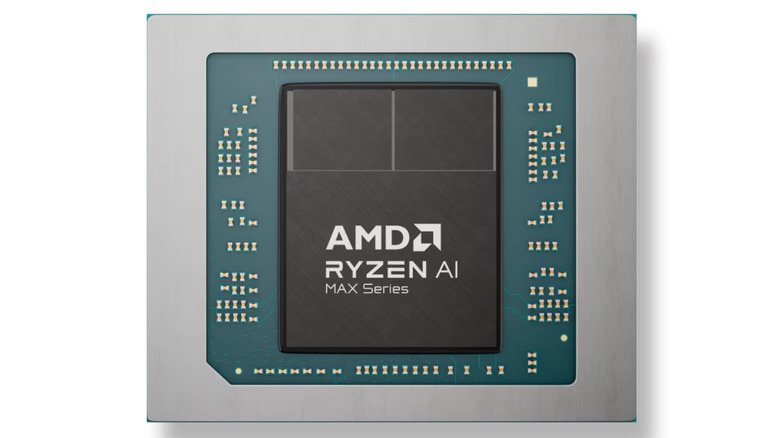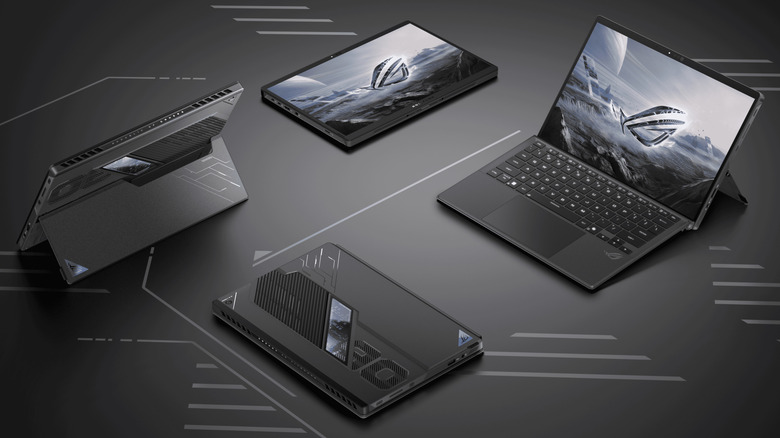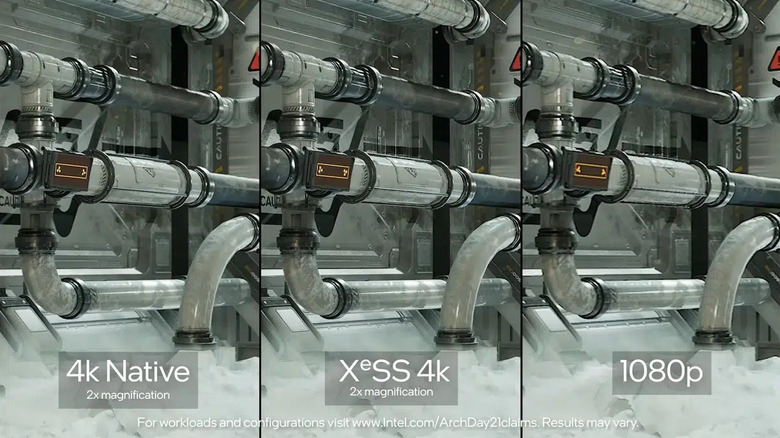Which CPU Has The Most Powerful Integrated GPU Available Today?
The entry-level graphics card market is shrinking fast, mainly because of inflation. Today, even basic cards like the Nvidia RTX 5050 start at $250, while AMD's RX 9060XT 8 GB is priced at $299. Just a few years ago, you could get an RX 480, a solid mid-range GPU, for $199. As affordable discrete GPUs become rare, integrated graphics and APUs are stepping up. AMD's Ryzen 5 8600G and Ryzen 7 8700G already offer decent 1080p gaming without needing a separate GPU, making them a great option for budget builds.
But AMD isn't stopping there: At the top of its new Ryzen AI 300 series is the Strix Halo (formerly Ryzen AI Max+ 395), which shows how far integrated chips have come. It packs a powerful 16-core x86 CPU running at 3.0 GHz base and up to 5.1 GHz boost, along with the Radeon 8060S; an integrated GPU based on the RDNA 3.5 architecture. With speeds up to 2.9 GHz, it handles both CPU and GPU tasks within a 120-watt power limit. While it's not cheap, it offers serious performance without needing a separate graphics card, especially in laptops and compact PCs.
Compared to Apple's M4 and Qualcomm's Snapdragon X Elite, both built on ARM architecture, AMD's chip has one major advantage: Full support for x86 apps and games. Apple and Qualcomm are great for creative work and battery life, but struggle with PC gaming due to software emulation. The Ryzen AI Max+ 395, on the other hand, runs games natively, making it an all-in-one choice for users who want performance and compatibility in a single chip.
How well does it perform?
Looking at synthetic benchmarks like 3DMark Fire Strike, the Radeon 8060S delivers an impressive graphics score of 25,940 on average, putting it on par with a desktop Radeon RX 7600, and just slightly below a desktop Nvidia RTX 4060. Mobile GPUs are often choked by firm power limits and low core counts and are tuned for efficiency, making them significantly worse than their desktop counterparts.
Hardware Canucks got their hands on an ROG Flow Z13 running a Ryzen AI Max+ 395 chip at 70-watt TDP and compared it against laptops equipped with discrete Nvidia RTX 4060, 4070 mobile GPUs, as well as a MacBook M4 Pro. In real-world productivity benchmarks like Blender and Houdini, the Ryzen AI Max+ 395 beats out its predecessor (Ryzen 9 AI HX 370) and even Apple's M4 Pro. In tasks like Adobe Photoshop, though, where Apple's chip runs natively, AMD falls behind. Still, the new Max+ 395 chip is faster than all x86 chips tested in productivity, AI workloads, and more.
For gaming performance, the Radeon 8060S held its own and even outperformed the laptops with a powerful RTX 4070 in some titles, while breaking even in others. In "Cyberpunk 2077," for instance, the 8060S averaged 39 fps at 1600p, compared to the RTX 4070's 37 fps. In "Baldur's Gate 3" and "Doom Eternal," the 8060S averaged 57 fps and 149 fps at 1600p, while the RTX 4070 managed marginally better at 62 fps and 153 fps, respectively.
How does it compare to Intel's most powerful iGPU?
The closest rival to the Ryzen AI Max+ 395 is Intel's Lunar Lake Core Ultra 9 288V APU. It features the Intel ARC 140V, an 8-core Xe2-based iGPU clocked up to 2050 MHz. However, AMD's Strix Halo has a clear lead in gaming. In tests conducted by ETA Prime, "Forza Horizon 5" ran at an average of 63 fps on the Intel chip at 1080p using Intel XeSS and medium settings, while the AMD APU pulled off a staggering 82 fps at 1200p and extreme settings, without any upscaling. In "Cyberpunk 2077," AMD managed to score an average of 73 fps running at 1200p at high settings with FSR set to auto, while Intel's ARC 140 V only managed an average fps of 67 fps on low settings on 1080p, even with XeSS set to performance mode.
The Strix Halo is a major win for AMD, bringing almost discrete graphics performance to the iGPU. APUs are also more power-efficient than traditional CPU+GPU setups, giving laptop makers the freedom to build smaller, lighter devices without compromising on gaming performance or battery life. That said, the Radeon 8060S currently only ships with flagship CPUs, meaning it's limited to high-end machines.
Expect to pay at least $1,499 for mini PCs like the GMKtec EVO X2 and over $2,00 for laptops. For example, the Asus ROG Flow Z13 starts at a steep $2,100. Though it's only a matter of time before AMD trickles down the Radeon 8060S to midrange systems by pairing it with affordable six or eight-core Ryzen CPUs.


